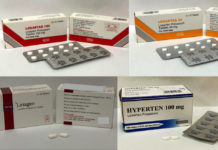
This past week, Singapore has been shrouded in a thick haze – the result of the burning of forests in neighboring Java and Sumatra.
The National Environmental Agency (NEA) gives excellent up-to-date information about the air quality. However, with 6 different parameters on the website, there has been some confusion about what they mean.
What is the PSI?
The PSI, or Pollutants Standard Index, is an index designed in the USA to measure air quality. Unfortunately, the original index used in Singapore only measured 5 pollutants:
- Sulphur dioxide (SO2)
- Particulate matter (PM10)
- Nitrogen dioxide (NO2)
- Carbon monoxide (CO)
- Ozone (O3)
It did not include PM2.5 , which, ironically, is the most significant air pollutant to watch during haze periods. For this reason, NEA drew critisism from the public during the 2013 haze attack, which saw the PSI rise to “hazardous” levels of more than 300 for the first time.
In April 2014, PSI was revised to now include PM2.5 on top of the 5 pollutants, making it a much more relevant measure of air quality.
Each of the 6 pollutants are given a value, and the pollutant with the highest value is then taken as the PSI. Since PM2.5 is the most significant pollutant during haze periods, the PSI will be indicative of the PM2.5 level in the air. Hence, the PSI is an accurate measure of air quality in Singapore.
By now, every Singaporean should be very familiar with the PSI classifications. Here it is again:
What is PM2.5 and why it So Important?
PM2.5 refers to pollutant particles which are less than 2.5 micrometers in diameter – referred to as “fine” particles. They are so tiny (approximately 1/30th the width of a human hair) that they can lodge deeply into the lungs when inhaled. In contrast, larger particles are cleared by our nostrils and do not pose such great danger.
PM2.5 particles can penetrate into the alveoli (the smallest air exchanging sacs in the lungs) and may even enter the bloodstream, causing far-reaching long-term health effects.
How deadly are they? Numerous studies have linked PM2.5 particles with many health problems, including:
- Cardiovascular disease and heart attacks
- Lung cancer
- Arrhythmias, or irregular heartbeat,
- increased respiratory symptoms, such as irritation of the airways, coughing or difficulty breathing.
- Premature death in people with heart/lung illness
- Aggravated asthma
Yes, they are BAD. And these particles are what the haze is made of, which is why we need to take the haze seriously.
1 Hour PM2.5, 3 Hour PSI or 24 Hour PSI?
The NEA website offers 3 important indicators, which has caused some confusion: the 1 Hour PM2.5, the 3 Hour PSI and the 24 Hour PSI
The 24 hour PSI, like the name suggests, measures the average air quality over the last 24 hours. This indicator is useful in determining the health effects of the haze, and has been shown in studies to correspond to the effects on the health of the affected population.
Likewise, the 3 hour PSI is an average of the PSI over the last 3 hours. This is an indicator unique to Singapore, and is useful if you want to get an idea of how to plan for your activities over the next few hours. This is especially useful if, for example, you need to decide whether to continue or cancel a football match which will take place in 3 hours time.
Finally, the 1 hour PM2.5 gives the most up-to-date information on air quality. If you belong to the sensitive group, this index would the one to watch. If you are wondering whether to have a run now at the Botanical gardens, this would also be the index you want to be looking at.
In summary:
- 24 Hour PSI – a good indicator of how the air quality will affect the health of the population.
- 3 Hour PSI – useful for planning activities in the upcoming hours
- 1 Hour PM 2.5 – the index to watch if you have preexisting health problems. Also the index to take note of if you plan to do an outdoor activity right now.
What If I REALLY Need to Go Outdoors?
If you die die must go out despite a bad haze situation, these are things you can do:
- keep the time spent outdoors as short as possible. Jump into a car/bus/MRT as soon as you can.
- Drink more water to flush out the toxins absorbed by your skin and lungs
- Cover your nose and mouth as much as you can. A simple paper mask will help; a damp towel will work even better. Finally, an N95 mask will filter out most of the pollutant particles (95% of them, if worn properly, hence the name). However, N95 masks also increase the effort needed to breathe, which may make you feel giddy and sick if worn for prolonged periods (and thus make you run indoors, haze or not).

Where Can I Find The Latest Info?

The NEA website itself is often experiencing high traffic and doesn’t seem to work well during this period. Go instead to the NEA’s Haze portal: www.haze.gov.sg for the latest haze updates, including up-to-date PSI and PM2.5 values.
Alternative sites include:
- The NEA Facebook page.
- AsiaOne, which also provides up-to-date PSI information:

Hope the information above helps you. Most importantly, do your best to stay indoors during this period. Drink lots of water and cut down on alcohol and coffee which can cause water loss, during this period. Eat lots of vegetables and fruits to give your immune system a boost. We go through this year after year, and this year, we will survive the haze, once again!
References:
1) Particulate Matter, Enviromental Protection Agency http://www.epa.gov/pm/health.html
2) National Environmental Agency. http://www.nea.gov.sg/GenericErrorPage.htm?aspxerrorpath=/anti-pollution-radiation-protection/air-pollution-control/psi/psi-readings-over-the-last-24-hours
3) Wikipedia: Particulates https://en.wikipedia.org/wiki/Particulates#PM2.5

















